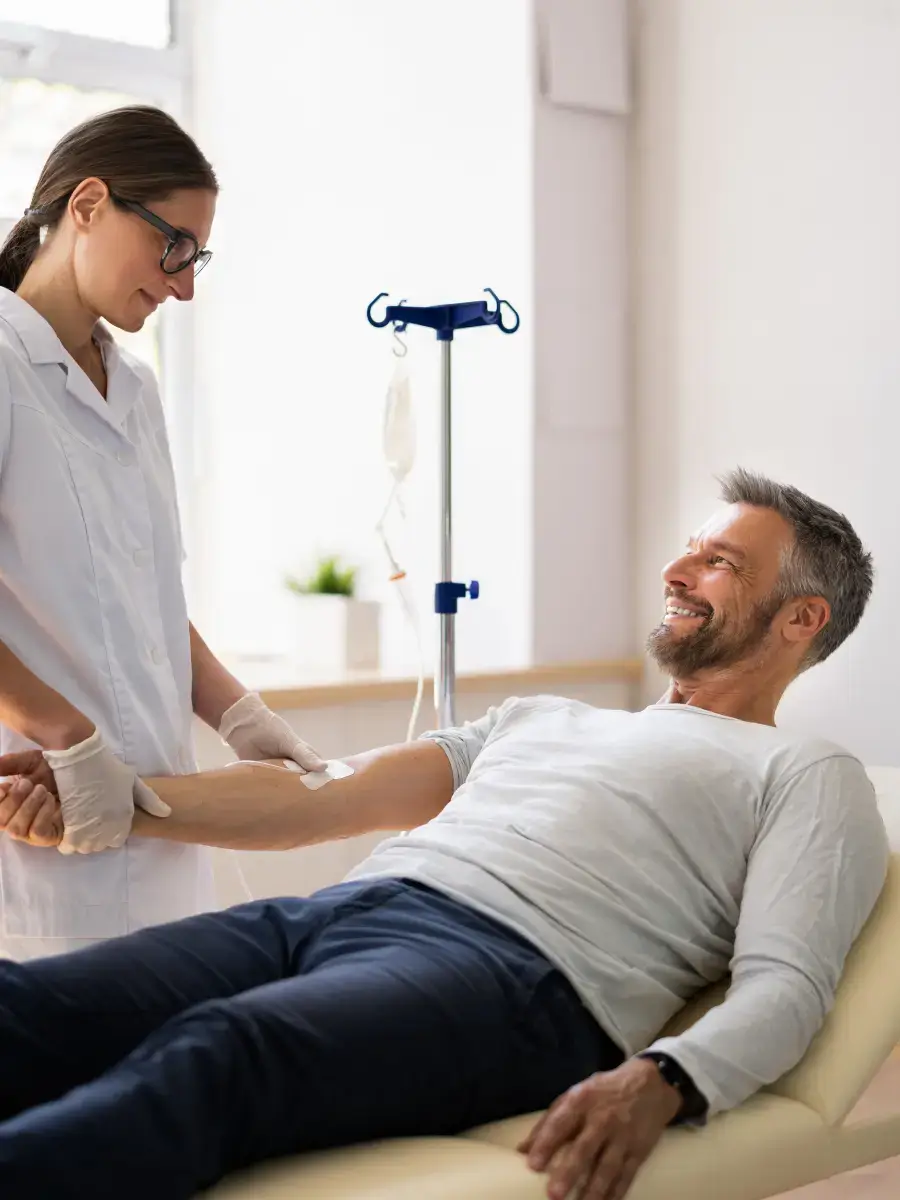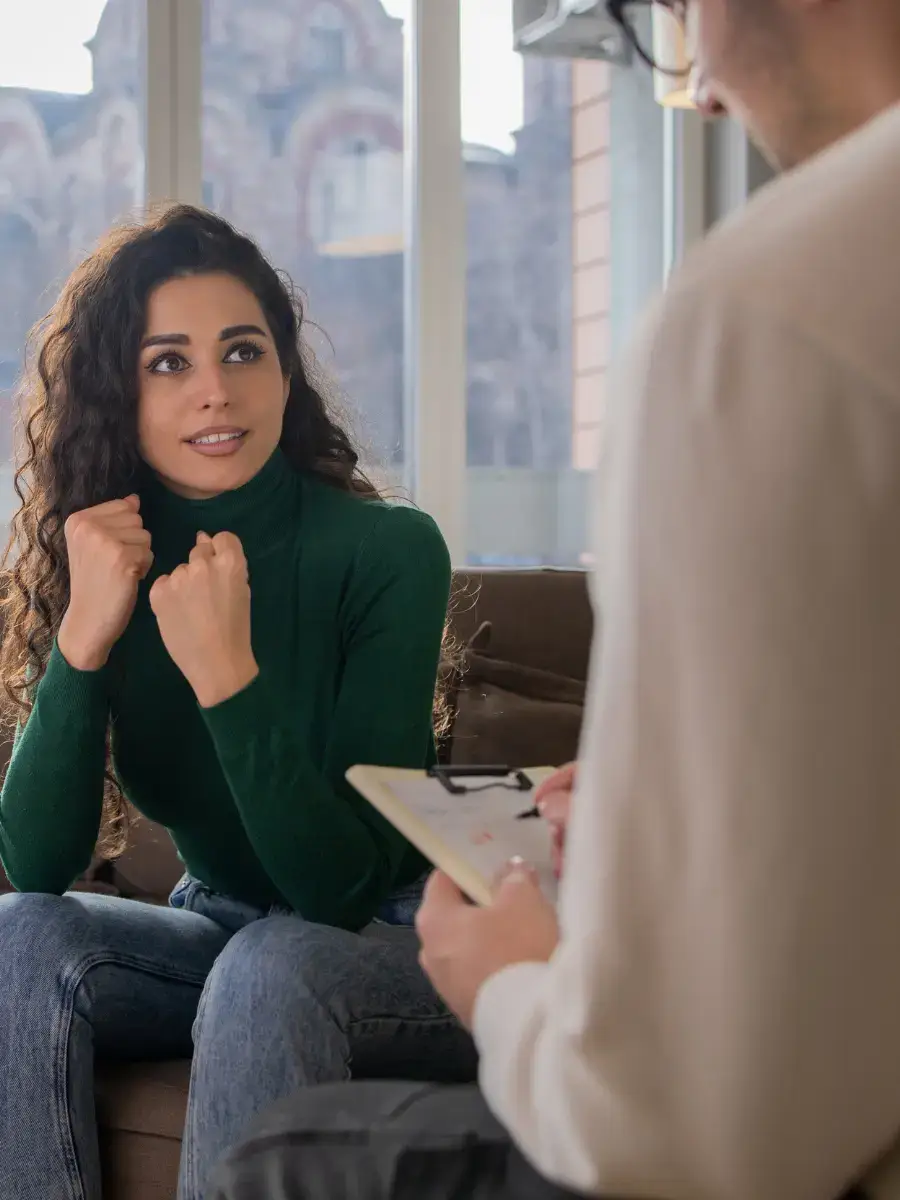
Ketamine therapy is an innovative clinical intervention that uses low doses of ketamine to alleviate conditions such as depression, anxiety, PTSD, and chronic pain.
Unlike traditional antidepressants, ketamine works by blocking NMDA receptors in the brain and promoting the release of glutamate, a neurotransmitter essential for brain plasticity and emotional regulation.
The additional glutamate helps “reset” dysfunctional neural pathways, offering rapid relief from symptoms within hours. Over time, glutamate is known to help with synapse formation, maintenance, and plasticity.
Ketamine therapy is administered in various forms, including intravenous (IV) infusions, nasal sprays, and oral tablets, and has been particularly helpful for patients with treatment-resistant conditions.
Ketamine is an FDA-approved anesthetic. When compounded at low, controlled doses may help treatment-resistant depression, chronic pain, anxiety, and PTSD.
Ketamine is most commonly compounded into nasal sprays, but can also be taken as troches and rapid dissolve tablets.
Yes.
While ketamine as an anesthetic agent is FDA-approved, off-label uses (e.g., for depression) are legal when prescribed by a licensed provider and compounded for patient-specific needs.
Certain compounded forms, like nasal sprays and troches, may be prescribed for at-home use under strict medical oversight.
Providers will assess if this is suitable based on the patient's condition and safety.
IV ketamine and the traditionally prescribed nasal spray Spravato must be administered in a doctor's office.
Relief varies. Some experience benefits for days or weeks after a dose, while others require maintenance sessions.
Consistency and adjunct therapy (e.g., counseling) help improve outcomes.
Compounded ketamine offers significant advantages by providing lower-cost alternatives to IV infusions. It enables personalized treatment through custom doses and forms, such as nasal sprays, for home use.
You can also access allergen-free or preservative-free formulations tailored to sensitivities.
All compounded ketamine therapies require ongoing oversight and prescription from your provider to ensure appropriate use.
There are several approaches to ketamine therapy. Patients have different medication administration options, each tailored to meet their specific needs.
The most common types of ketamine therapy include:

Ketamine infusion therapy, also known as intravenous (IV) ketamine therapy, involves administering low doses of ketamine directly into the bloodstream via an IV drip. This method allows for precise control over the dosage and has the highest bioavailability, allowing for a rapid onset of effects.
Infusion therapy is administered in a clinical setting under medical supervision to monitor the patient’s response to the drug closely. Patients typically sign up for a series of low-dose infusions over several weeks, with each session lasting about 45 minutes to an hour.
Many patients experience significant symptom relief after just a few treatments, though ongoing maintenance infusions may be necessary for long-term benefits.

Ketamine-assisted psychotherapy (KAP) is a comprehensive approach that combines ketamine therapy with traditional psychotherapy. In this model, patients take ketamine to modify their mental state and help them explore their emotions and traumas in a more open, receptive state.
During therapy sessions, ketamine’s dissociation properties assist patients in accessing challenging memories and emotions by helping to lower mental barriers.
KAP sessions typically involve a trained therapist guiding the patient through their experience while under the influence of ketamine.
This mix of medication and therapy has shown promise in helping people with depression, anxiety, and PTSD by allowing them to process and understand their feelings more deeply.


Sublingual ketamine is another non-invasive form that involves placing a ketamine troche under the tongue, where it dissolves and is absorbed into the bloodstream. While the effects are not as immediate as IV or nasal ketamine, sublingual ketamine offers a convenient option for at-home use in some cases.
This approach is frequently used in a maintenance plan after initial infusions or other treatments. Sublingual ketamine can be particularly beneficial for patients who need ongoing, low-dose treatment to manage chronic conditions like depression or anxiety.

Intramuscular (IM) ketamine injections are another method of ketamine administration that involves injecting ketamine directly into a muscle. The injection is usually in the arm or thigh and occurs in a clinical setting.
This method provides rapid onset of effects similar to IV therapy, though the dosage is less precise. IM ketamine is often used as an alternative to IV infusions for patients who may have difficulty with IV access or prefer an injection.

The precise mechanism by which ketamine delivers its therapeutic benefits is still being studied. Researchers believe it works by increasing the availability of glutamate, a neurotransmitter that plays a crucial role in neural communication and plasticity.
This is a different process when compared to SSRIs, another prevalent medication used to treat depression. Where SSRIs may take 2 to 4 weeks to provide benefits, patients can expect the antidepressant properties of ketamine to kick in within the hour.
Additionally, ketamine’s dissociative effects can help patients detach from painful memories or emotions, making it easier to process trauma during therapy.

Ketamine therapy is particularly helpful for patients with treatment-resistant depression. Some patients try traditional antidepressants or therapies and do not find success. Ketamine provides an additional option that may help them find relief.
Patients also use it for a variety of other conditions, including:
While ketamine therapy is not a first-line treatment, it can offer life-changing benefits for patients who have exhausted other options. Ultimately, it is up to the patient and their healthcare provider to make an informed decision about whether ketamine may be a viable option.


Ketamine therapy represents a promising new approach for alleviating mental health conditions and chronic pain.
With various forms of administration, including IV infusions, ketamine-assisted psychotherapy, nasal sprays, and more, there’s a wide range of options to tailor the medication for each patient.
Whether used as a standalone therapy or in combination with psychotherapy, ketamine offers hope and healing to patients who previously had limited options for relief.